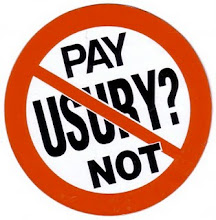Currency in the Community

BY MATT PRESCOTT
November 2011
"A growing group of communities are attempting to break away from the constraints of their official currency. The results include the charming Lewes, Totnes, Brixton and Tooting pounds, to name but a few British ones, and the noteworthy ‘BerkShares’ from the Berkshire area of Massachusetts, which boasts over 2.7 million BerkShares in circulation. This is no new experiment – it has its origins reaching back to the earliest forms of exchange – and it was re-imagined early in the 20th Century by the Swiss Wirtschaftsring to overcome currency shortages in the 1930s. Like many ideas co-opted by the sustainability community, it combines something old with something new.
Whatever the barriers, community currencies offer a way to bring visibility to the environmentally and socially damaging effects of our consumer culture. Hotbeds for local creativity, they are sometimes geographical, but at other times based on a disparate community of shared interest. They could play a role in articulating a more sustainable and progressive way out of the current financial malaise. Certainly for an environmentalist wondering how society can attempt to sidestep an upsurge in consumerism the minute the recession comes to an end, it’s an idea worthy of closer examination.
A community currency, as the name implies, operates within a defined community, ordinarily a town. Let’s invent the Robertsbridge franc. Normally used in parallel to the official currency, a hairdresser, for instance, might accept both Robertsbridge francs and British pounds. He or she might then be able to buy more vegetables from another participating trader with those Robertsbridge francs than with the equivalent ordinary pounds otherwise earned from the same haircut. Whatever happens, the Robertsbridge francs don’t leave Robertsbridge.
These transactions encourage an awareness of the provenance of goods, provide support for local traders and micro-enterprise, can lead to greater local employment and even counter a national economic downturn – very much ‘power to the people’. However, from the perspective of the environmentalist, they do something more profound – they don’t treat the environment as an infinite source of resources to be commoditised and sold, because the actors in the economy – local people – identify with the resources available locally and their natural limits.
It’s not about a green financial revolution. After all, community currencies have their limitations – they are unable to finance investments for instance – so they need to be seen as parallel, not alternative. However, they may offer real help in articulating a subtle shift towards a more sustainable economy. They exhibit few of the attributes of conventional currencies which cause concern to many environmentalists – fewer trade barriers, expanding markets and the commoditisation of everything conceivable, from the naming of stars to the pricing a tonne of carbon offset. Parallel and community currencies stimulate a complete reconsideration of value. Not only could they better calibrate the value of a sandwich lunch as compared to a haircut, but perhaps even determine the cost to the community of air pollution from vehicles passing through, maybe even tax it.
Back in the world of the familiar, retailer loyalty programmes – a form of parallel currency – have traditionally been employed to stimulate spending in the official currency. In these may lie a way forward. They have been recast by the more environmentally and socially conscious into projects like Wedgecard, a loyalty card for local shops, and as green incentive points, such as ‘Green Rewards’ points.
In an enlightened move to encourage greener behaviour through rewards linked to greener retail and support for local charities, Green Rewards have recently implemented a programme in the London Borough of Bexley to improve municipal recycling rates. Success is a win-win – residents receive ‘green rewards’ for positive behaviour change and the local authority saves money on the cost of landfill, which finances the rewards. Easily translated into other positive environmental behaviour changes, such as saving energy, schemes like this can deliver incremental, achievable environmental benefits, are scalable, affordable and involve no re-engineering of the financial system.
There are many more angles to explore, including both the Local Exchange Trading System, an informal local trading scheme first set up in British Columbia in the 1980s and now operating in over a thousand small communities around the world, time banks, and the energy-specific personal carbon trading schemes. Of these, there are several proposed variations, each designed to reduce energy use by individuals or householders to within centrally agreed national or global limits using a tradable carbon allowance.
All of these connected ideas offer opportunities for organisations of any kind to stimulate participation and innovation around shared goals. Corporates can, for instance, associate carbon budgets with individual teams or departments in the form of a number of tradable carbon units. Acting as a carbon spendthrift can not only be used as one important performance metric, but associated with a bonus or other benefit, while excessive spend could impact on next year’s budget or trigger a performance review. Beyond carbon, other environmental costs could be internally commoditised and used to focus minds on specific areas of sustainability performance.
So is this a thought experiment for middle class greens or the basis for a genuine shift in the social norms and behaviours of individuals, consumers and community or organisations members, irrespective of their underlying motivations and attitudes? Unlike a national or international ‘carbon price’, community currencies operate at the grassroots level, can be easily adopted by online communities, from workforces to charity members to campaign groups, and any quantitative easing is a sign of success." (snip) ...
This article is originally published at this website:
http://www.robertsbridgegroup.com/what-we-think/currency-in-the-community
NOTE: Matt Prescott is a co-founder of The Robertbridge Group.


0 Comments:
Post a Comment
<< Home